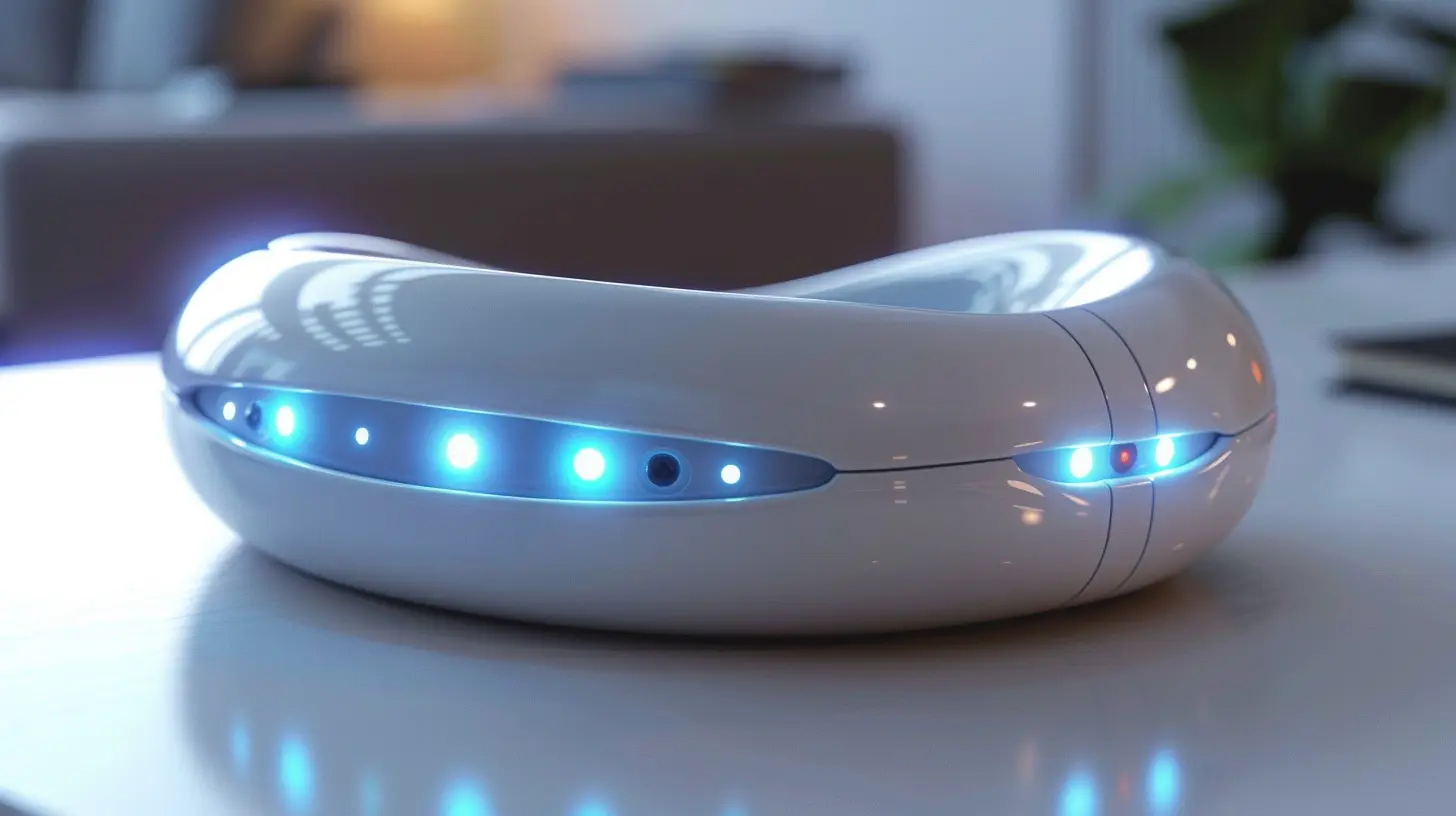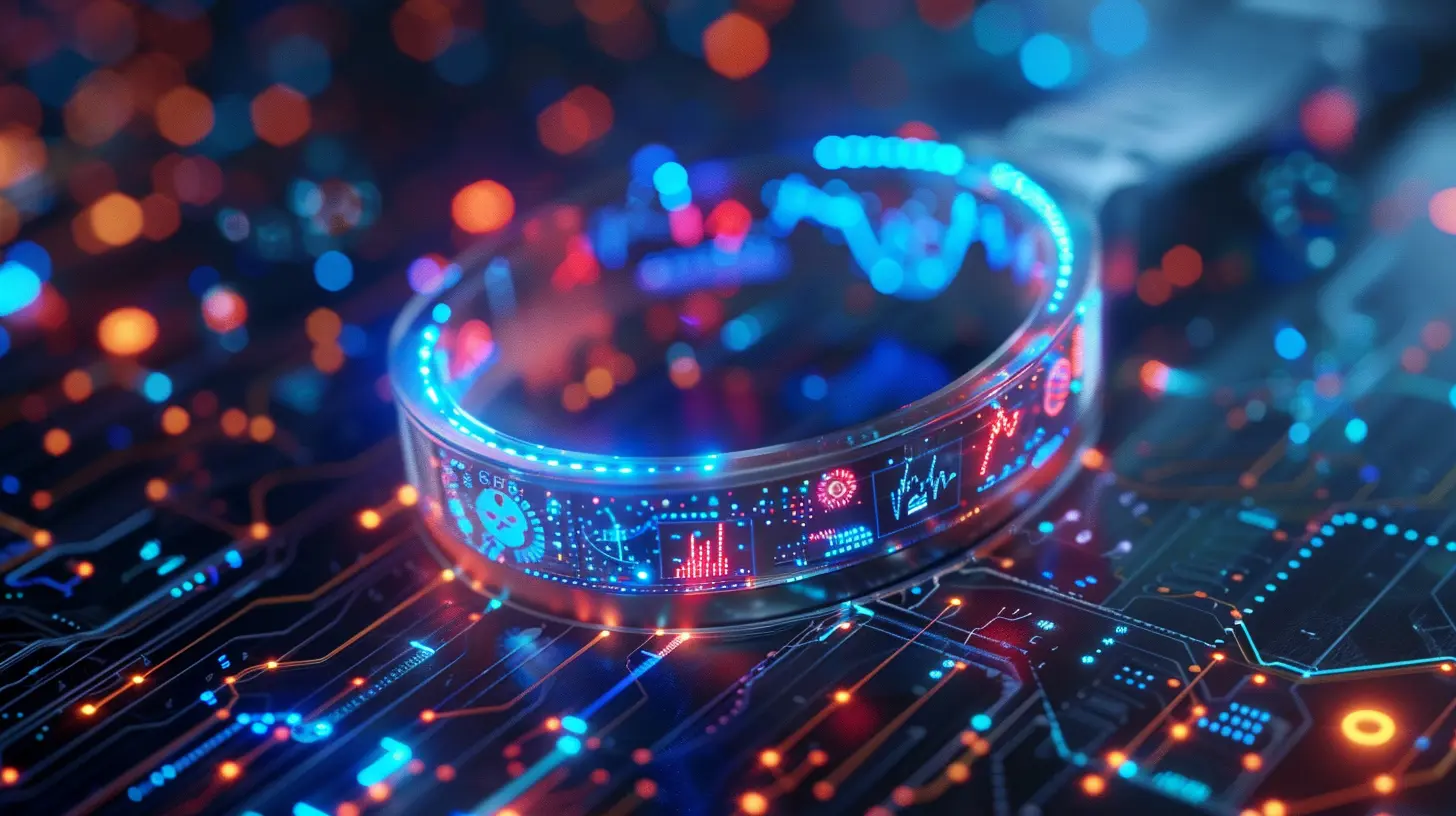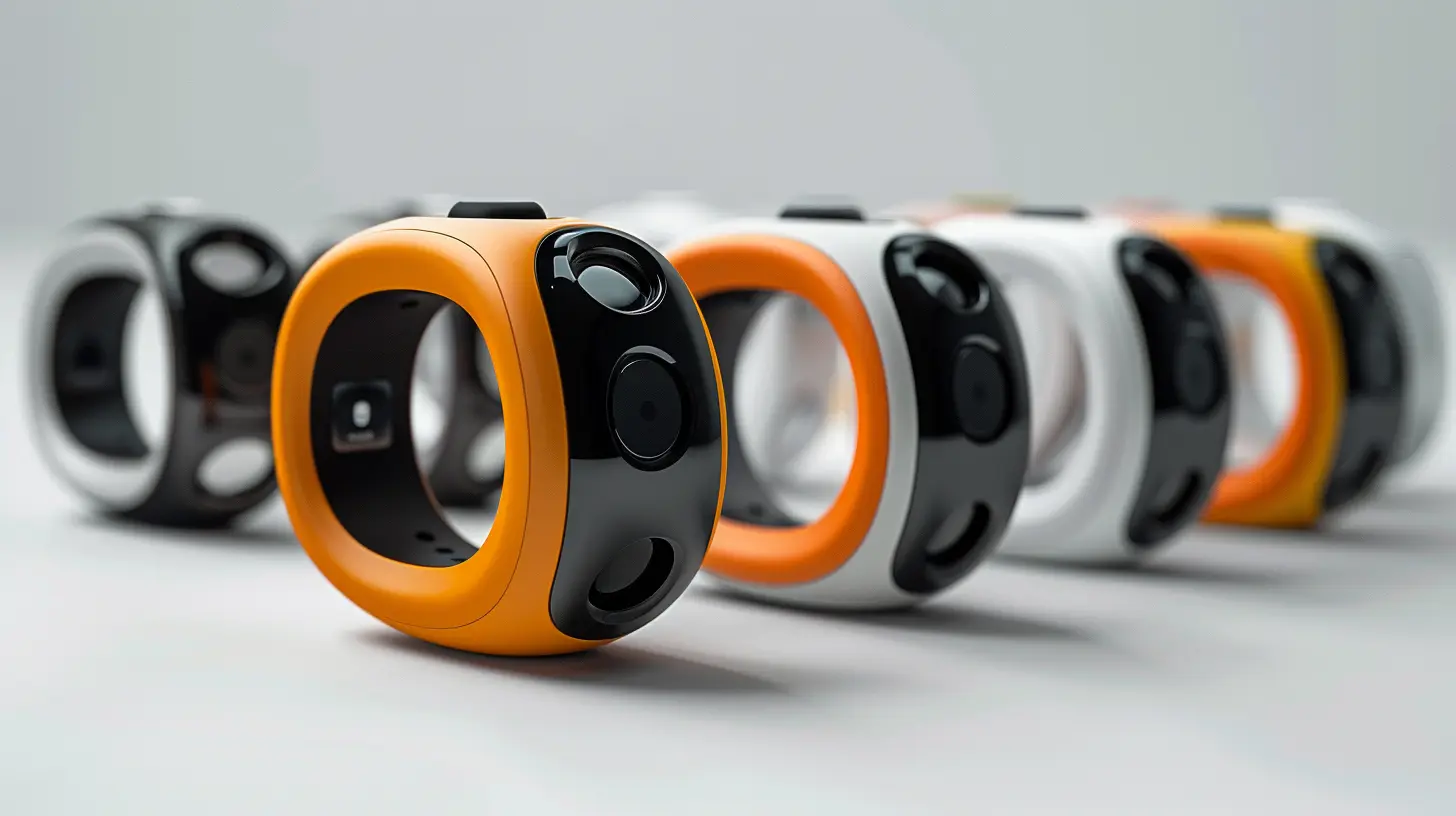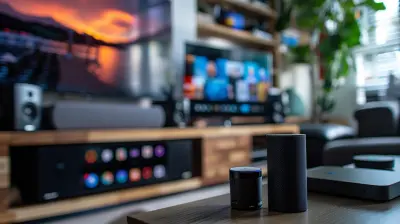Revolutionizing Healthcare with IoT Wearables
1 November 2025
Imagine a world where your health is monitored 24/7 without you even lifting a finger. Well, thanks to the Internet of Things (IoT) wearables, that future is now. We’ve all seen fitness trackers and smartwatches, but what if I told you these devices are just scratching the surface? The integration of IoT wearables in healthcare is revolutionizing the way we treat, monitor, and even prevent health conditions.
In this article, we’ll dive deep into how IoT wearables are shaking up the healthcare industry, the benefits they bring, the challenges we need to overcome, and what the future holds. Let’s get started!

What Are IoT Wearables?
Before we dig into the nitty-gritty, let’s first break down what IoT wearables actually are. IoT, or the Internet of Things, refers to the network of physical devices that connect and exchange data over the internet. Now, when we talk about wearables, we’re referring to smart devices that people wear on their bodies. These devices can collect data, monitor biometrics, and communicate with other devices or healthcare systems.From smartwatches that track your heart rate to advanced medical devices that monitor chronic diseases, IoT wearables are changing the way we interact with our health.

How IoT Wearables are Changing Healthcare
1. Real-Time Health Monitoring
Gone are the days when you had to wait for your annual check-up to know how your body’s doing. With IoT wearables, health data is being collected in real-time, 24/7. Whether it’s your heart rate, oxygen levels, or sleep patterns, a simple wearable device can keep tabs on your health and alert you or your doctor if something’s off.Think about it: instead of waiting to notice symptoms of a condition, wearables can catch problems early. For instance, devices can detect irregular heartbeats (arrhythmias), which could potentially prevent serious health issues like strokes.
2. Remote Patient Monitoring
IoT wearables are a godsend for people with chronic conditions like diabetes or hypertension. Take blood sugar monitoring, for example. Instead of pricking your finger multiple times a day, IoT wearables can continuously monitor glucose levels and send that data to your healthcare provider. If your levels spike or drop, your doctor can be alerted in real-time and intervene before things get serious.This remote monitoring is especially useful for elderly patients or those who live in rural areas where accessing healthcare facilities might not be easy. It’s like having a doctor by your side 24/7, without the need to constantly visit a clinic.
3. Personalized Healthcare
We all know that healthcare is not one-size-fits-all. What works for one person might not work for another. With IoT wearables, healthcare can be tailored to each individual’s needs. These devices collect vast amounts of data, and with the help of AI and machine learning, healthcare providers can analyze this data to offer personalized treatment plans.For example, wearables can track how your body responds to certain medications or treatments, enabling doctors to tweak your doses or change your treatment plan without guesswork. It’s like having a healthcare plan designed specifically for you.
4. Early Detection and Prevention
Prevention is always better than cure, right? IoT wearables are making that a reality. These devices can detect early signs of potential health issues before they become full-blown problems. For example, wearables can monitor your heart rate and alert you if you’re at risk of developing cardiovascular disease.By continuously monitoring our health, wearables can help us catch diseases early, when they’re easier (and cheaper) to treat. In the long run, this could lead to fewer hospital visits, reduced healthcare costs, and a healthier population overall.

Types of IoT Wearables in Healthcare
Okay, so we know IoT wearables are awesome, but what kinds of devices are we talking about? Here are some of the most popular types of IoT wearables being used in healthcare today:1. Smartwatches
Smartwatches are probably the most common IoT wearable. Devices like the Apple Watch or Fitbit can track your heart rate, steps, calories burned, and even your sleep. But they’re not just for fitness buffs anymore. Many smartwatches now come with ECG (electrocardiogram) capabilities, which can detect irregular heart rhythms.2. Fitness Trackers
Similar to smartwatches, fitness trackers are designed to monitor your physical activity and health metrics. They might not have all the bells and whistles of a smartwatch, but they’re great for tracking things like steps, calories burned, and heart rate during exercise.3. Smart Clothing
Yes, you read that right—clothing! Imagine wearing a shirt that monitors your heart rate, breathing, and posture. These smart garments are embedded with sensors that collect data and send it to your healthcare provider. They’re especially useful for athletes or patients recovering from surgery who need to monitor their vitals closely.4. Implantable Devices
This might sound like science fiction, but implantable IoT devices are already being used in healthcare. These devices are surgically inserted into the body and can monitor things like heart function, blood pressure, and even brain activity. For example, pacemakers with IoT capabilities can send real-time data to doctors, ensuring that patients with heart conditions are closely monitored at all times.5. Smart Glasses
While smart glasses like Google Glass didn’t take off in the consumer market, they’re proving to be valuable in healthcare. Doctors can use smart glasses during surgeries to display patient data or record procedures for later review. Some smart glasses can even be worn by patients to help those with vision impairments.
Benefits of IoT Wearables in Healthcare
So, what’s the big deal? Why is everyone so excited about IoT wearables in healthcare? Here are some of the top benefits:1. Improved Patient Outcomes
With continuous monitoring and real-time data, doctors can catch issues early and intervene before they become serious. This leads to better outcomes for patients and a higher quality of care.2. Reduced Healthcare Costs
By preventing diseases and catching problems early, IoT wearables can help reduce the need for expensive treatments or hospital stays. Plus, remote monitoring means fewer doctor visits, which can lower costs for both patients and healthcare providers.3. Convenience and Comfort
Let’s face it—no one likes going to the doctor’s office. With IoT wearables, you can monitor your health from the comfort of your home. No need for constant check-ups or invasive tests. It’s healthcare on your terms.4. Empowerment
Knowledge is power, right? IoT wearables give patients more control over their health. You can monitor your own vitals, track your progress, and take an active role in managing your care. It’s like having your own personal health assistant right on your wrist.Challenges of IoT Wearables in Healthcare
Of course, it’s not all sunshine and rainbows. There are some challenges that need to be addressed for IoT wearables to reach their full potential in healthcare.1. Data Privacy and Security
When you’re dealing with sensitive health data, privacy is a huge concern. IoT devices collect a massive amount of personal data, and if that data isn’t properly secured, it could be vulnerable to hacking. Imagine someone gaining access to your health records or even tampering with a medical device. Scary, right?Ensuring that IoT wearables have robust security measures is crucial to protecting patient privacy.
2. Accuracy and Reliability
While IoT wearables are great at tracking general health metrics, they’re not always 100% accurate. An incorrectly calibrated device could lead to false alarms or, worse, missed health issues. Ensuring the accuracy and reliability of these devices is essential for their success in healthcare.3. Integration with Healthcare Systems
For IoT wearables to truly revolutionize healthcare, they need to be integrated with existing healthcare systems. This means that the data collected by wearables needs to be compatible with electronic health records (EHRs) and accessible to healthcare providers. Unfortunately, not all systems are currently designed to handle this kind of data, which can create roadblocks.4. Cost and Accessibility
While IoT wearables are becoming more affordable, not everyone can afford them. For these devices to make a real impact, they need to be accessible to people from all walks of life, not just those who can pay top dollar.
The Future of IoT Wearables in Healthcare
So, where do we go from here? The future of IoT wearables in healthcare looks incredibly promising. As technology advances, we can expect wearables to become even more sophisticated, accurate, and accessible. AI and machine learning will play a huge role in analyzing the data collected by wearables, allowing for even more personalized and effective healthcare.We might also see wearables that go beyond monitoring and actually help treat conditions. For example, imagine a wearable that could administer insulin to diabetic patients based on real-time glucose levels. The possibilities are endless.
In time, IoT wearables could become as common as smartphones, with everyone wearing a device that keeps them healthy and connected to their healthcare provider. It’s an exciting time to be alive!
Conclusion
IoT wearables are more than just cool gadgets—they’re game-changers in the healthcare industry. From real-time monitoring and personalized care to early detection and prevention, these devices are already making a huge impact on how we approach health and wellness. While there are still challenges to overcome, the future looks incredibly bright for IoT wearables in healthcare.So, the next time you glance at your smartwatch, remember that you’re not just checking the time—you’re part of a healthcare revolution.
all images in this post were generated using AI tools
Category:
Iot DevicesAuthor:

Vincent Hubbard
Discussion
rate this article
1 comments
Kael Sanders
This article effectively highlights the transformative potential of IoT wearables in healthcare. By enabling real-time monitoring and personalized care, these devices can significantly improve patient outcomes. The integration of technology into healthcare not only enhances efficiency but also empowers patients to take charge of their health.
November 1, 2025 at 3:55 AM

Vincent Hubbard
Thank you for your thoughtful comment! I'm glad you found the article highlights the impactful role of IoT wearables in enhancing patient care and outcomes.


